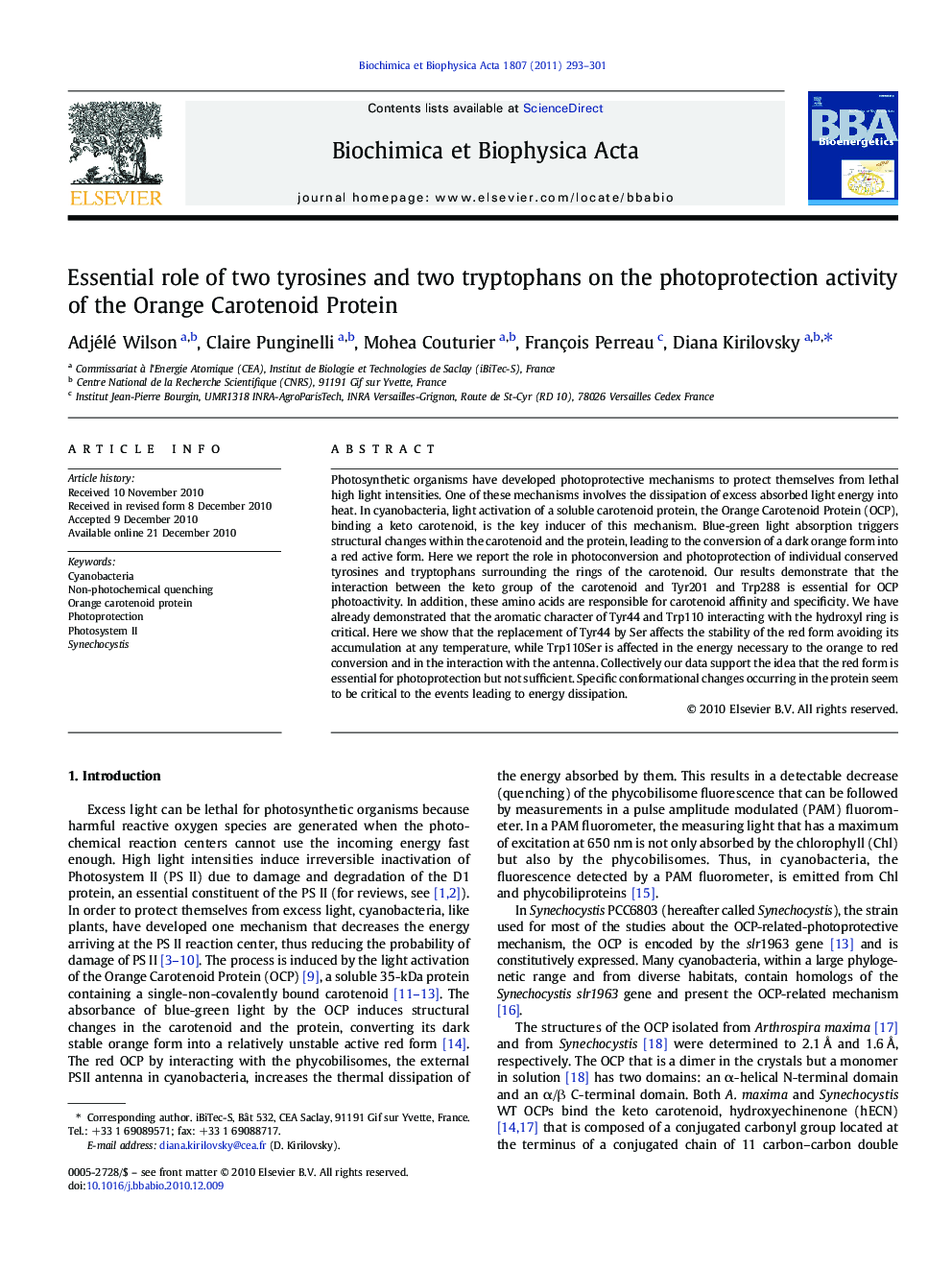| Article ID | Journal | Published Year | Pages | File Type |
|---|---|---|---|---|
| 1942796 | Biochimica et Biophysica Acta (BBA) - Bioenergetics | 2011 | 9 Pages |
Photosynthetic organisms have developed photoprotective mechanisms to protect themselves from lethal high light intensities. One of these mechanisms involves the dissipation of excess absorbed light energy into heat. In cyanobacteria, light activation of a soluble carotenoid protein, the Orange Carotenoid Protein (OCP), binding a keto carotenoid, is the key inducer of this mechanism. Blue-green light absorption triggers structural changes within the carotenoid and the protein, leading to the conversion of a dark orange form into a red active form. Here we report the role in photoconversion and photoprotection of individual conserved tyrosines and tryptophans surrounding the rings of the carotenoid. Our results demonstrate that the interaction between the keto group of the carotenoid and Tyr201 and Trp288 is essential for OCP photoactivity. In addition, these amino acids are responsible for carotenoid affinity and specificity. We have already demonstrated that the aromatic character of Tyr44 and Trp110 interacting with the hydroxyl ring is critical. Here we show that the replacement of Tyr44 by Ser affects the stability of the red form avoiding its accumulation at any temperature, while Trp110Ser is affected in the energy necessary to the orange to red conversion and in the interaction with the antenna. Collectively our data support the idea that the red form is essential for photoprotection but not sufficient. Specific conformational changes occurring in the protein seem to be critical to the events leading to energy dissipation.
Research Highlights►In OCP, Y201 and W288 are essential for photoactivity and photoprotection. ►Hydrogen bonds between these amino acids and the carotenoid stabilize the orange form. ►Y201 and W288 are responsible for carotenoid affinity and specificity. ►Change of Y44 by S destabilizes the red form. ►Change of W110 by S increases the energy necessary to red conversion.
